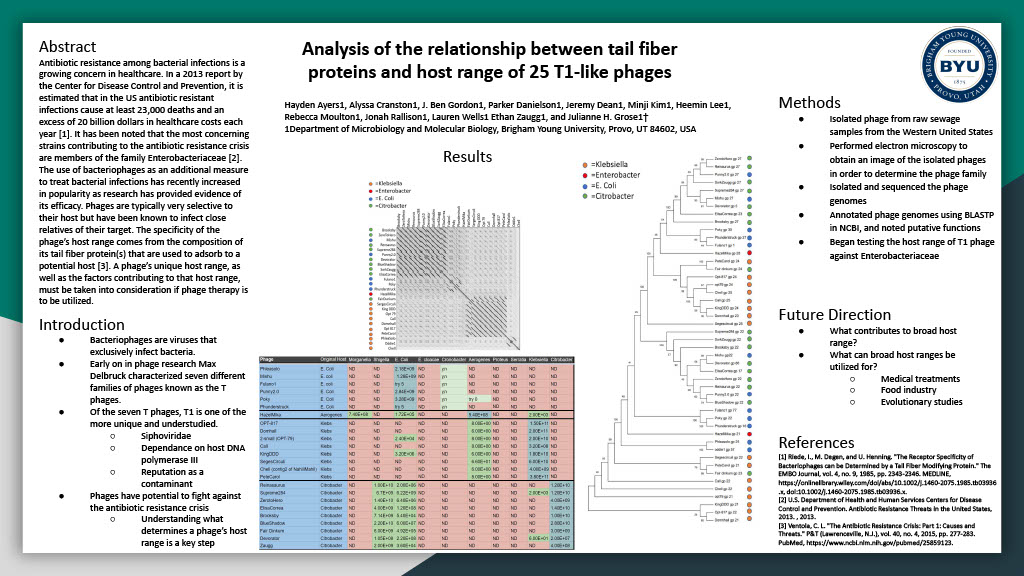Presenter Name: Jonah Rallison
Additional Presenters:
Parker Danielson, Ben Gordon
Description
Antibiotic resistance among bacterial infections is a growing concern in healthcare. In a 2013 report by the Center for Disease Control and Prevention, it is estimated that in the US antibiotic resistant infections cause at least 23,000 deaths and an excess of 20 billion dollars in healthcare costs each year [1]. It has been noted that the most concerning strains contributing to the antibiotic resistance crisis are members of the family Enterobacteriaceae [2]. The use of bacteriophages as an additional measure to treat bacterial infections has recently increased in popularity as research has provided evidence of its efficacy. Phages are typically very selective to their host but have been known to infect close relatives of their target. It is hypothesized the specificity of the phage's host range comes from the composition of its tail fiber protein(s) that are used to adsorb to a potential host [3]. A phage's unique host range, as well as the factors contributing to that host range, must be taken into consideration if phage therapy is to be utilized.
To better understand how phage tail fiber proteins affect the ability to infect various bacterial strains/species we conducted a host range analysis of 25 T1-like phages against 10 species of Enterobacteriaceae. The results of the host range analysis were then used in a study of the tail fibers of each of the 25 phages using tools such as NCBI BLAST, Phyre2, and phylogenetics to determine their effect on phage infection. CLICK HERE FOR THE ZOOM PRESENTATION
To better understand how phage tail fiber proteins affect the ability to infect various bacterial strains/species we conducted a host range analysis of 25 T1-like phages against 10 species of Enterobacteriaceae. The results of the host range analysis were then used in a study of the tail fibers of each of the 25 phages using tools such as NCBI BLAST, Phyre2, and phylogenetics to determine their effect on phage infection. CLICK HERE FOR THE ZOOM PRESENTATION
University / Institution: Brigham Young University
Type: Poster
Format: Virtual
Area of Research: Science & Technology
Email: jonahkr@byu.edu
Faculty Mentor: Jullianne Grose

